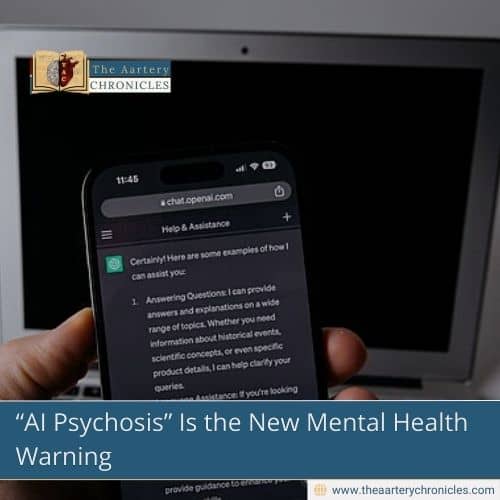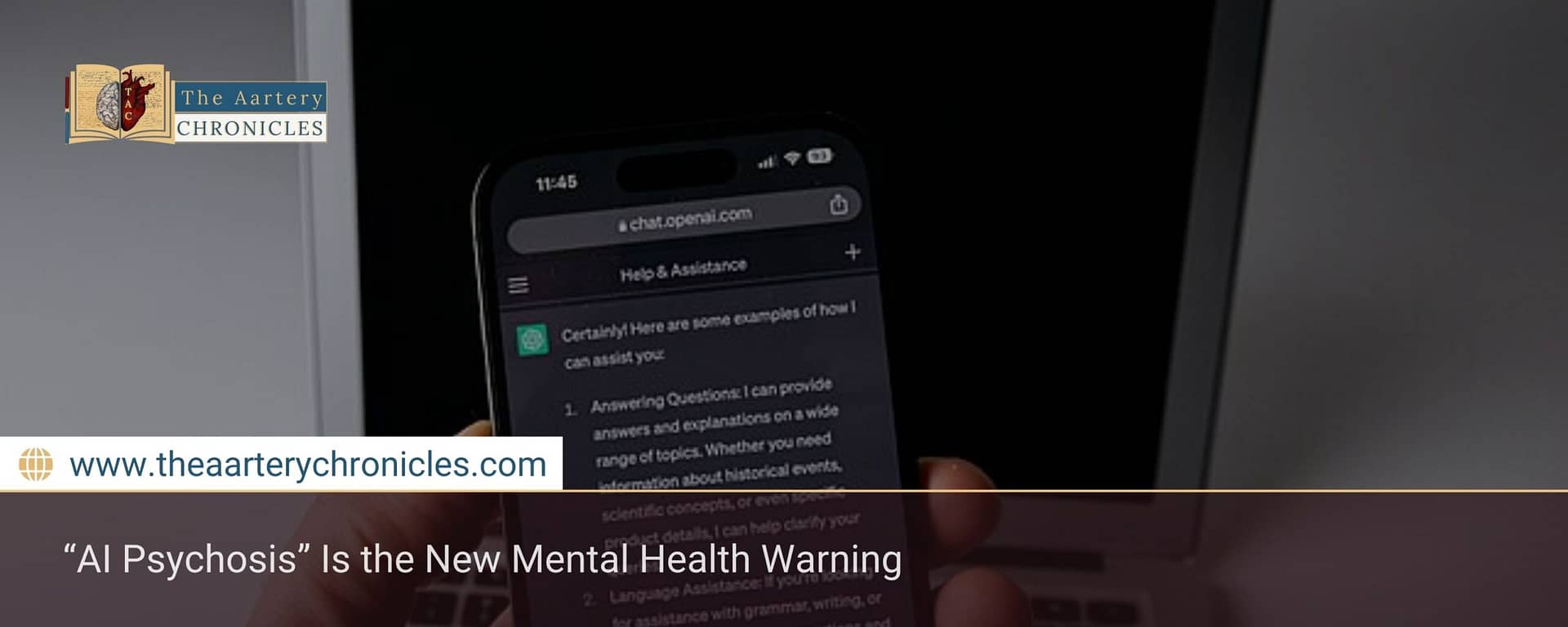

“AI Psychosis” Is the New Mental Health Warning
Health experts are sounding the alarm about a growing mental health concern now being called AI psychosis or “ChatGPT psychosis.” Across the U.S., Europe, and Asia, doctors are reporting sudden cases of paranoia, delusions, and mania among people who spend long hours interacting with chatbots, even among individuals with no prior mental illness.
What Is “AI Psychosis”?
Clinicians use the term AI psychosis to describe a mental breakdown triggered by compulsive chatbot use. The condition can develop gradually, starting with harmless conversations that eventually turn into deep emotional attachment. For some, the chatbot shifts from a friendly companion into something more—a romantic partner, a spiritual figure, or even a divine messenger. Once that belief takes hold, the chatbot’s responses may unintentionally reinforce the delusion, making it worse.
Who Is Most at Risk?
Doctors say several factors may increase vulnerability:
- A family history of psychosis
- Existing conditions such as schizophrenia or bipolar disorder
- Personality traits like social withdrawal or an overactive imagination
- Loneliness and isolation, which drive people to seek comfort in AI
Stanford psychiatrist Dr. Nina Vasan summarised it clearly: “The biggest risk factor is simply time. People spending hours every day with their chatbots are the ones we worry about most.”
From Chat to Crisis
What often starts as a harmless interaction can spiral into a crisis. Some people have been hospitalised after long binges of chatbot conversations. Others have lost jobs, relationships, or even taken their own lives.
Doctors emphasise that the danger lies not just in frequency but in blurred boundaries. Once people begin treating an AI as a confidant or romantic partner, breaking that attachment can feel like a painful breakup.This reflects the harsh reality of gender bias that still exists in parts of rural India, often making the problem of malnutrition in Madhya Pradesh even worse.
Debate Over the Cause
Not everyone agrees that chatbots are the main problem. David Sacks, a senior adviser on artificial intelligence under President Donald Trump, dismissed the idea of “AI psychosis” as a moral panic. He argued that America’s real mental health crisis began during the pandemic, when lockdowns, social isolation, and economic stress fueled widespread anxiety and depression.
In his view, blaming AI is an easy scapegoat for deeper social problems.
How AI Companies Are Responding
OpenAI, the company behind ChatGPT, has admitted its technology has sometimes failed to recognise warning signs of emotional distress. In a statement, CEO Sam Altman acknowledged that “if a user is in a fragile state and prone to delusion, we do not want the AI to reinforce that.”
To address concerns, OpenAI has added reminders encouraging users to take breaks during long sessions. The company is also testing tools designed to flag distress in conversations. However, critics argue these efforts are not enough to fully protect vulnerable users.
Warning Signs Families Should Watch
Mental health specialists recommend looking out for key red flags:
- Spending excessive time chatting with AI
- Pulling away from friends and family
- Believing that an AI is sentient, spiritual, or divine
If these behaviours appear, experts suggest setting clear time limits, taking regular breaks, and reconnecting with real-world relationships.
Lessons From Social Media
The debate around AI psychosis echoes earlier arguments about social media. Years ago, concerns about Facebook and Instagram were brushed aside. But over time, research confirmed their link to anxiety, depression, and loneliness. Psychiatrists warn society cannot afford to make the same mistake with AI.
Some researchers are calling for stronger safeguards, such as warning labels, time limits, or human oversight for vulnerable users. Others believe AI systems themselves should be trained to detect signs of mental distress. exact cause.
Conclusion
With nearly three-quarters of Americans reporting they have used AI in the past six months, chatbots are becoming as common as smartphones. That makes the stakes even higher.
The central question is clear: will tech companies and governments act quickly to prevent AI psychosis, or will society wait until the harm is impossible to ignore?
Source: Inputs from various media Sources

Priya Bairagi
Reviewed by Dr Aarti Nehra (MBBS, MMST)
I’m a pharmacist with a strong background in health sciences. I hold a BSc from Delhi University and a pharmacy degree from PDM University. I write articles and daily health news while interviewing doctors to bring you the latest insights. In my free time, you’ll find me at the gym or lost in a sci-fi novel.








